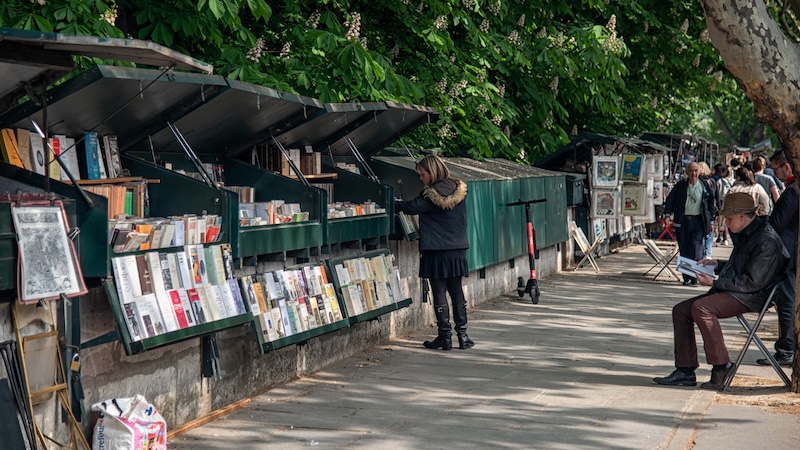New Orleans for Grownups
Beyond Bourbon Street
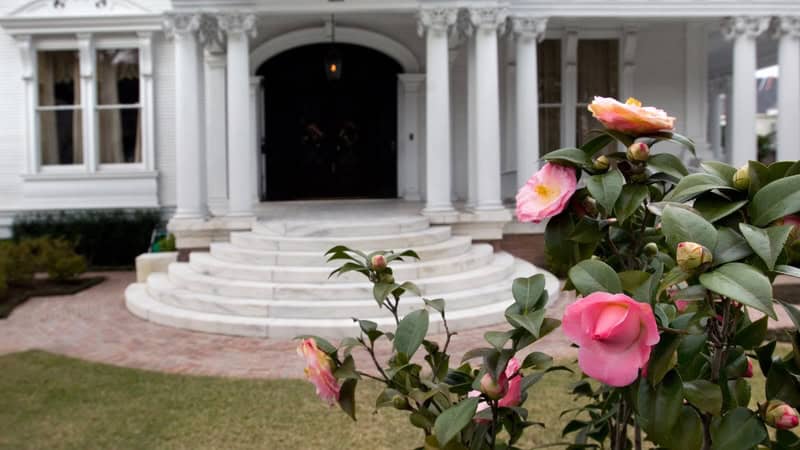
The vibrant city of New Orleans, Louisiana, can seem a bit overwhelming for travelers who are past the partying stage. Alan Pell Crawford takes us beyond Bourbon Street to the quieter, more dignified parts of the city – i.e., New Orleans for grownups.
“I loved Bourbon Street – when I was 21.” So says Bonnie Wirfs as we stand in the shade of the live oaks, crepe myrtles and magnolias of New Orleans’ Garden District. Like so many of us, Bonnie first came to the city as a college student. With more visits, the charm of Bourbon Street wore off, and other parts of New Orleans cast their spell. Eventually, she relocated from her native Wisconsin and is now a tour guide – a knowledgeable and admirably forthright one.
“Some parts of Bourbon Street can be smelly,” Bonnie says. It’s crowded and noisy, and for too many visitors, it is all they see. For those who get to experience more of New Orleans, however, the ones who can afford it buy a second or even third home down here. We’re standing in front of the actress Sandra Bullock’s mansion, which isn’t far from one that Nicholas Cage owned, which isn’t far from one where Peyton and Eli Manning (father Archie was a New Orleans Saints quarterback) grew up. The author Anne Rice, who wrote “Interview with the Vampire,” owned at least one Garden District mansion, each of which is impressive but no more so than many of the others along these shady streets.
It is quiet here, too, unlike so much of the French Quarter. The neighbors like to keep it that way. Tour buses are not allowed, but walking tours like Bonnie’s are, and they must wrap it up by 6 p.m. But you can see a lot of this 12×15-block neighborhood in a two-hour stroll, and learn a good deal about the city’s history and its architecture.
Flowerbeds and fountains
The mansions of the Garden District are not outrageously expensive, but upkeep can be. The 9-bedroom, 20,000-square-foot Buckner mansion, built in 1856, sold a few years ago, Bonnie tells us, for $4 million. But the new owners had to spend $100,000 for a new roof. Proper maintenance of these historic properties, built between 1830 and 1900, is required by law. You see crews at work, “and none of the materials come from Lowe’s or Home Depot,” Bonnie says. “It’s all custom-made.” The shotgun houses of the French Quarter are built right up to the sidewalk. In the Garden District, there are flowerbeds, fountains and front porches. And ferns – lots of ferns. Palms, too.
There are world-class restaurants here in the Garden District and throughout the city as well. “New Orleans food is as delicious as the less criminal forms of sin,” Mark Twain said, and you can find fine dining all over the place. The cuisine of this city is in some sense like the history and the architecture: It’s not something spring-break revelers care about or can appreciate. But grownups can.
Cradle of jazz
There’s so much more to this storied city than Mardi Gras, and it would be a shame to miss it. There’s great food, as Mark Twain tells us, but there is also music. New Orleans was, after all, the cradle of jazz, and the tradition established by Louis Armstrong and others is revered and kept alive, generation after generation. The New Orleans Museum of Art at City Park and the National World War II Museum are first-rate – and not on the typical Mardi Gras merrymaker’s to-do list.
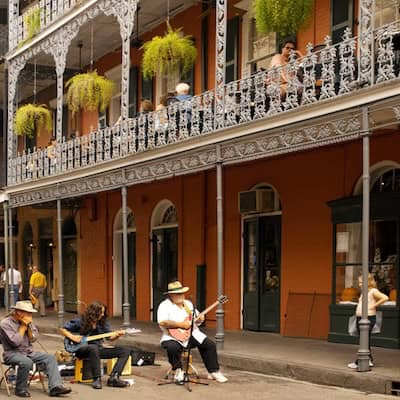
So, where to begin? OK, you need to see Bourbon Street. The first few blocks off Canal Street can be off-putting, but the deeper you get into the Vieux Carre – French Quarter to us Americans – the more you will like it. The grand old Hotel Monteleone, on Royal just a block off Bourbon, has been welcoming travelers since 1886. Truman Capote claimed he was born here. This was a fib, but the author of “Breakfast at Tiffany’s” certainly spent time at its revolving Carousel Bar, which began to spin in 1949. The bartenders also served drinks to, among other notables, Tennessee Williams, William Faulkner and Ernest Hemingway. The bar seats 25, and it takes 15 minutes to complete the entire orbit, so, no, you won’t get dizzy.
There’s wonderful antiquing to be done on Royal, unlike Bourbon with its T-shirt shops, and bands play on the street here, too. You should not miss Jackson Square, or Café Du Monde, famous for its beignets and open 24 hours a day. Down that way, near the French Market, you can catch a glimpse of the waterfront and even board a riverboat for a leisurely ride up “the lazy Mississippi.”
Part of the charm of this “northernmost Caribbean city” is that it does not take itself too seriously. There’s a raffish jauntiness about a town that enjoys its adult beverages as much as New Orleans does. City government has been comically corrupt forever, and incompetent. It can take forever for potholes to be repaired, and to commemorate the existence of a sizable crater on Canal Street, locals celebrate “Sinkhole de Mayo.” Even in the Garden District, the massive roots of the live oaks tear up the sidewalks, so watch your step. Katrina or no Katrina, there’s always damage to deal with.
The presence of the past

Once you have walked off the calories of those powered-sugar confections from Café Du Monde, grab lunch at the Napoleon House on Chartres Street. No, that’s wrong. Don’t grab it. Sit in the courtyard or at one of the tables looking out onto the street and enjoy a leisurely lunch. Remember you are in the “City that Care Forgot,” and conduct yourself accordingly. Tennessee Williams drank here – where did he not drink? – and you will understand why. In this, as in so many places in New Orleans, “the presence of the past” is palpable.
Built in 1784, supposedly as a residence for the exiled emperor, assuming he wished to immigrate, the building was the site of a grocery until 1914, when the Napoleon House restaurant opened. Famous for its muffaletta sandwiches and Pimm’s Cups, the building was designated a National Historic Landmark in 1970 for its architecture. Classical music plays on the sound system, but quietly and unobtrusively.
For more boisterous entertainment, get tickets to Preservation Hall, a few blocks away on St. Peter Street. Until the 1960s, an art gallery operated here, and the owners invited local jazz musicians for jam sessions on the premises. Some of the great names of New Orleans jazz participated – George Lewis, Sweet Emma Barrett, Punch Miller – and before long, the space became a fulltime music venue. Here, as nowhere else in New Orleans, the tradition of early jazz is kept alive, with a rotating lineup of performers, some of whose fathers and grandfathers played here. There are shows 360 days a year, and the Preservation Hall Jazz Band also tours.
For even more boisterous entertainment, head to nearby Frenchmen Street in the Faubourg Marigny neighborhood, where young bands perform, sometimes on the street itself, for locals. Here too at clubs like d.b.a., the Spotted Cat and Snug Harbor, you can catch good music but in a more raucous setting.
More on the New Orleans for grownups music scene
There are excellent restaurants in the Vieux Carre, even on Bourbon Street. You cannot go wrong at Galatoire’s or Antoine’s, but my favorite is Brennan’s which, founded in 1946 and operating in an 18-century building on Royal Street, specializes in its Creole take on French cuisine. The Brennan family, which has been New Orleans dining plutocracy for generations, owns and operates 13 restaurants including (we’ll get there in a moment) Commander’s Palace in the Garden District. You might get arguments about where Bananas Foster was first cooked up, but none about the flavor.
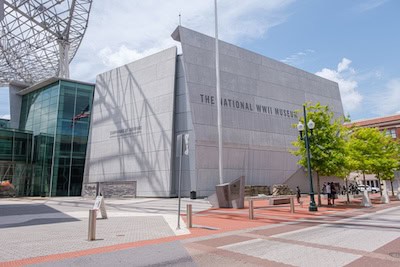
Now let’s move on. You won’t find many frat-boy partiers at the National World War II Museum in the Central Business District, but that’s OK. Give them a few years, and they’ll be here. Originally called the D-Day Museum, it opened on June 6, 2000, to commemorate the 56th anniversary of the invasion of Normandy. The site for such a museum might seem strange at first but actually makes perfect sense. The landing craft used for the invasion – Higgins boats, they were called – were designed and built by Higgins Industries on the New Orleans waterfront. One such craft is on display in the atrium of the Louisiana Memorial Pavilion, along with aircraft, and there are special exhibits and videos throughout the large and interconnected structures.
Visitors are encouraged to set aside 2½ to 3 hours for the full experience. Some items are quite moving. Be sure, in the Malcolm S. Forbes Rare and Iconic Artifacts Gallery, to see the wedding dress. The groom, a paratrooper, was shot down, with little hope of survival. Rescued, he sent the parachute home. His bride turned it into her wedding dress, now on display. Across the street from the museum is the Higgins Hotel, the “official hotel of the National World War II Museum.” There are World War II-related conferences and conventions here. Don’t be surprised to see now-frail veterans of that war arriving here, where they receive a warm welcome.
Cities of the Dead
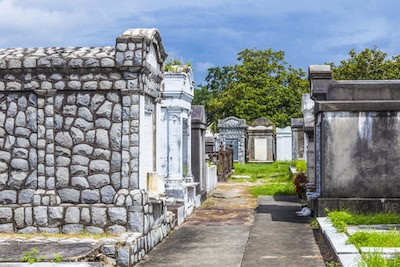
For all that, New Orleans is a city where a sense of the distant, not the recent, past, exerts its spooky pull. No visit is complete without a tour of one of its haunting “Cities of the Dead,” as they are called. These are its cemeteries in which, because much of New Orleans is below sea level, people are entombed above ground. The oldest and most legendary, St. Louis Cemetery No. 1, on Basin Street, about eight blocks from the river, dates to 1788. Although it occupies only one square block, the vaults here contain the remains of thousands. One of the vaults – tourists ask and guides point it out – was the final resting place of Marie Laveau, the “voodoo priestess.”
Just when you thought you “got” New Orleans, it will surprise you. Who knew that Edgar Degas, the great impressionist painter, had relatives in the city and lived here for five months in 1872? The Degas were Creoles – native-born New Orleanians of French extraction – and Edgar called himself a “fils de Louisiane,” or son of Louisiana. His portrait of his blind sister-in-law Estelle Musson Degas, painted during his visit and on display in the superb New Orleans Museum of Art, the label tells us “captures the rapidly fading way of life of the city’s French-speaking Creole inhabitants who were increasingly being pushed aside by a wave of new English-speaking ‘American’ settlers.”
There are any number of other works in the museum – the “Golden Age of Dutch Painting” gallery is impressive, but so in its way is a new and temporary exhibit. This is the vibrant New African Masquerades exhibit. What is striking and significant, given the city’s multicultural influences, is how much the masquerades resemble what Mardi Gras Indians wear. The sculpture garden here, as well as the City Park that surrounds it, is also well worth seeing. (Plus, there’s a Café Du Monde here, too.)
This side of heaven
After all of this sightseeing, you have earned another great meal, and you’d be hard pressed to get a better one – or a more pleasant dining experience – than at the aforementioned Commander’s Palace. Founded by Emile Commander way back in 1893 and purchased by the Brennans in 1969, its chefs have included Paul Prudhomme and Emeril Legasse. True enough, but the lowliest member of the staff will impress you with their pleasant efficiency. They are, to a person, engaging and solicitous but never stagey. The restaurant, larger than you might expect, is busy but does not seem crowded. The guests by every indication are having a swell time, and the food, as you might expect, does not disappoint. They will fire up the Bananas Foster at your table, and how the waiter manages to avoid the flames is something we will not understand this side of heaven. (At Dickie Brennan’s Bourbon House, ask for a seat by the window and watch the revelers – from a distance.)
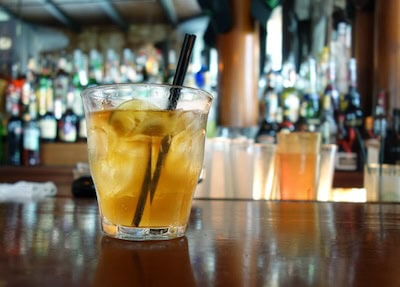
There are any number of places to go for a cocktail or a nightcap. The Sazerac House, as might be expected, serves up its Sazerac, and other establishments will make you a Ramos Gin Fizz. The Copper Vine on Poydras Street in the Central Business District is a bar, a restaurant and, according to Garden & Gun, a “richly textured, art-forward boutique inn.” (Try the Cucumber Basil Gimlet.)
I’m here at Copper Vine on what turns out to be the weekend of Tulane University’s commencement ceremonies. Proud families are arriving, meeting eager young grads. I’m in the restaurant when Michael Lewis, the author of “Liar’s Poker,” “Moneyball,” “The Big Short” and other bestsellers, walks in. Pretty soon what appear to be family members show up as well, one in his graduation get-up. They gather on the sidewalk and take pictures. Then they are off, presumably to Caesar’s Superdome, where the ceremonies will be held.
Lewis’s family goes back generations here. He grew up in New Orleans and, while he now makes his home elsewhere, remains fond of the city. Once you’ve ventured past the first block or two of Bourbon Street, you’ll understand why. When you get back home, you too will “know what it means to miss New Orleans.” I promise.
Explore New Orleans for grownups before you go:
Garden District Tour
Bonnie Wirfs, Tour Guide
www.twochickswalkingtours.com
Hotel Monteleone
www.hotelmonteleone.com
214 Royal Street
New Orleans, La. 70130
Café Du Monde
www.shop.cafedumonde.com
800 Decatur Street
New Orleans, La. 70116
Napoleon House
www.napoleonhouse.com
500 Chartres Street
New Orleans, La. 70130
Preservation Hall
www.preservationhall.com
726 St. Peter Street
New Orleans, La. 70116
Brennan’s
www.brennansneworleans.com
417 Royal Street
New Orleans, La. 70130
Dickie Brennan’s Bourbon House
www.bourbonhouse.com
144 Bourbon Street
New Orleans, La. 70130
National World War II Museum
www.nationalww2museum.org
945 Magazine Street
New Orleans, La. 70130
The Higgins Hotel
www.higginshotelnola.com
1000 Magazine Street
New Orleans, La. 70130
St. Louis Cemetery No. 1
www.cemeterytourneworleans.com
501 Basin Street
New Orleans, La. 70112
New Orleans Museum of Art
www.noma.org
1 Collins Diboll Circle
New Orleans, La. 70124
Commander’s Palace
www.commanderspalace.com
1403 Washington Avenue
New Orleans, La. 70130
The Sazerac House
www.sazerachouse.com
101 Magazine Street
New Orleans, La. 70130
The Copper Vine
www.coppervine.com
1001 Poydras Street
New Orleans, La. 70112
